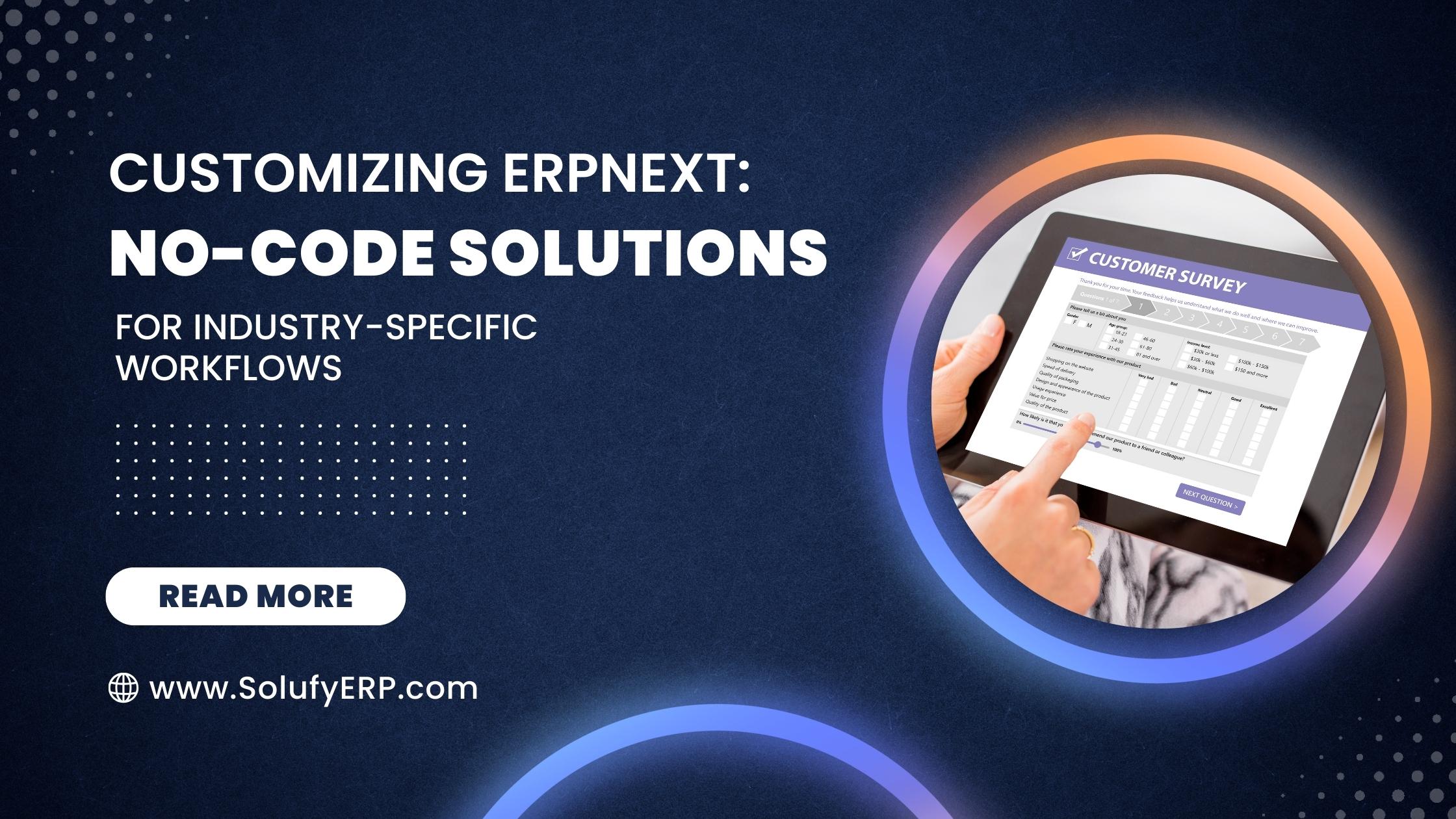With the changing business landscape today, one-size-fits-all ERP systems cannot satisfy the distinct requirements of different industries anymore. Each company—manufacturing, healthcare, retail, or services—has its own processes, data schemas, and report needs. Well, the good news is that ERPNext, a robust open-source ERP system, gives users the ability to tailor their platform using no-code tools so that industry-specific workflow customization becomes a breeze and within reach.
Why No-Code Customization Matters
Traditionally, tailoring an ERP system required deep technical expertise and significant development resources. This created bottlenecks, delays, and additional costs. But with no-code solutions in ERPNext, businesses can now:
- Modify forms and fields
- Automate workflows
- Add custom reports
- Control user permissions
- Payment Gateway
all without writing a single line of code. This puts the power back into the hands of business users, department heads, and administrators—people who understand the process best.
Let’s explore the key no-code tools in ERPNext that make this possible.
1. Custom Fields & Forms
Every industry has its unique data points. A logistics company might want to track container numbers, while a hospital might need patient vitals. ERPNext’s Custom Field feature allows users to add additional fields to standard forms. These can include dropdowns, checkboxes, links, tables, and even formula fields.
- Using the Customize Form tool, you can:
- Add new fields to existing doctypes
- Rearrange form layouts for better usability
- Hide or make fields mandatory
- Apply default values and validation rules
This ensures your ERP system captures the exact data your business needs.
2. Custom Scripts (Client-Side Logic)
For scenarios where logic or dynamic field behavior is needed (e.g., auto-filling values, showing/hiding fields based on conditions), ERPNext offers Client-Side Custom Scripts. Although technically JavaScript-based, many templates and examples make it easy for non-developers to use them with minimal tweaking.
Example:
javascript
Copy
Edit
frappe.ui.form.on(‘Sales Order’, {
customer: function(frm) {
if (frm.doc.customer === “VIP Customer”) {
frm.set_value(‘discount’, 10);
}
}
});
Even if you’re not a coder, you can modify pre-written scripts to automate specific tasks.
3. Workflow Builder
ERPNext’s Workflow tool allows you to define how documents move through various stages—for example, from Draft → Under Review → Approved.
With this tool, you can:
- Define roles that can approve or reject stages
- Create status-based transitions
- Set email or in-system alerts
- Configure conditional triggers
Whether you’re managing purchase approvals in a manufacturing company or processing claims in an insurance firm, the workflow builder ensures your business process is followed consistently.
4. Print Format Builder
Presentation matters. Whether it’s invoices, delivery notes, or reports, ERPNext’s Print Format Builder allows you to customize document layouts visually. Without needing HTML or CSS skills, you can:
- Add or remove fields from documents
- Change headers, logos, and layouts
- Set font styles and sizes
- Preview changes in real-time
This makes your documents not only functional but also professional and aligned with your brand.
5. Custom Reports and Dashboards
Different industries track different KPIs. A retail business may want to monitor daily sales, while a construction company may focus on project timelines and material usage. ERPNext’s Report Builder helps users generate reports based on any DocType, apply filters, groupings, and even charts.
With Dashboards, you can:
- Create real-time visualizations
- Monitor performance at a glance
- Combine multiple reports in one view
This enables quick, data-driven decision-making—without needing a BI tool.
6. Web Forms and Portals
Need to collect data from external users like customers or vendors? With ERPNext’s Web Forms, you can build no-code data entry portals. Perfect for:
- Customer support tickets
- Job applications
- Vendor registration
- Appointment bookings
Responses flow directly into the ERP, keeping everything centralized.
Real-World Use Cases
Healthcare ERP: Add patient-specific data fields, define approval workflows for prescriptions, and build custom reports for daily patient counts.
Manufacturing ERP: Automate Bill of Materials approvals, track production stages, and create dashboards for machine downtime.
Retail ERP: Create loyalty programs, track region-wise sales data, and design customized receipts.
Final Thoughts
ERPNext’s no-code customization features empower businesses of all sizes and industries to build tailor-made solutions that fit like a glove. By reducing reliance on developers, it accelerates ERP implementation, increases user adoption, and drives better results.
So whether you’re in logistics, hospitality, education, or beyond—don’t settle for generic workflows. Embrace no-code tools in ERPNext and create an ERP system that truly works for your business.
Need help customising ERPNext for your industry? Reach out to the experts at Solufy—your trusted ERPNext partner. Let’s transform your business, one workflow at a time.


